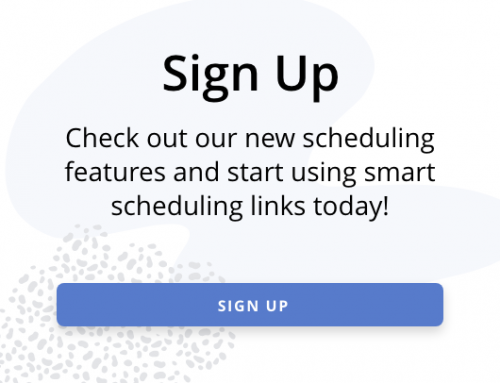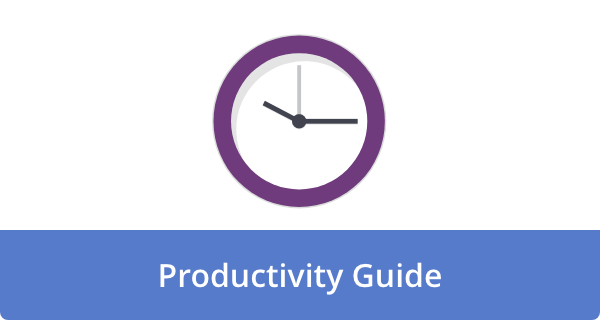

Have you ever woken up on Monday thinking, “What do I need to accomplish today? When Tuesday rolls around, you now have quite a list. By Wednesday, fires are starting, emails are multiplying, and meetings are taking up time that you will never regain. Finally, by the end of the week, you’re exhausted, but still wondering if you’ve accomplished anything significant.
Sound familiar?
There’s a reason billion-dollar CEOs don’t run their weeks like this. They don’t treat every day as a grab bag of tasks. Instead, they use a system of themed days — dedicating entire days (or large portions of days) to a single topic.
It’s more than a productivity trick. The goal is to think bigger, reduce decision fatigue, and reclaim control over your time. Best of all? No matter whether you run a Fortune 500, freelance from your kitchen table, or balance a demanding career with a family, it works.
So, learn how CEO-style weeks work, why they matter, and how to create your own.
Why Themed Days Work
Themed Days rely on a simple but powerful principle: context switching is expensive.
To put it more simply, when you jump from writing to meetings to emails to strategic planning, your brain pays a toll. Refocusing takes energy and time. It has been shown that frequent task switching can reduce productivity by as much as 40%.
However, when you group similar tasks into dedicated days, you can;
- Protect your focus. By focusing on one thing, instead of having your attention spread thin, you achieve greater results.
- Lower stress. Having a clear understanding of what each day is for helps you stop fighting competing priorities in your head.
- Think bigger. The fewer distractions you face, the more room you have for long-term, strategic thinking instead of reactive firefighting.
- Create momentum. By spending several hours on related tasks, you build rhythm and efficiency.
As a result, CEOs can dedicate time to vision-setting, high-level meetings, and deep work necessary to move the business forward. Even so, the system scales beautifully for all users.
The Classic CEO Week Structure
Although executives adapt Themed Days according to their priorities, here’s a typical structure to follow;
- Monday: Meetings and Management. Start the week off by aligning with your team, reviewing key metrics, and solving immediate problems.
- Tuesday: Product or Project Focus. This day is for in-depth work on core tasks, whether it’s strategy, product development, or writing for a significant project.
- Wednesday: Marketing and Growth. Whatever drives business growth, such as visibility, partnerships, sales calls, or networking, should be prioritized.
- Thursday: Strategy and Vision. Take a step back and take a look at the big picture. Conduct data analysis and refine goals to inform high-level decisions.
- Friday: Learning and Catch-Up. Tie up loose ends, review your week, and invest in your personal development. On this day, the CEO reflects on their performance.
- Weekend: Rest and Renewal. It is also essential to take time out to recharge, so you are ready to go the following week.
Obviously, not every CEO follows this exact plan. Intentionality, however, is the key. Every day has a purpose.
How to Create Your Own Themed Days
Themed Days don’t require an executive assistant or a corner office. You can design your own week by following these steps;
Identify your big buckets.
What are the 4–6 categories of work that matter most to you? For a freelancer, it might be client work, marketing, administration, learning, and rest. In the case of a manager, these may include: team management, in-depth work, meetings, and planning.
Match buckets to days.
Each day should be assigned a central theme. For instance, Mondays are reserved for team meetings, Tuesdays are dedicated to creative work, and Wednesdays are set aside for outreach.
Protect the theme.
Even though emergencies may occur, aim to dedicate 70–80% of each day to the theme. If possible, schedule unrelated tasks for their assigned days.
Build rituals.
Develop a routine that signals the shift to that day’s theme. Maybe Tuesday mornings begin with a two-hour deep work session, or Fridays with weekly metrics reviews.
Refine over time.
It’s unlikely that your first version will be perfect. If you feel rushed or scattered, adjust your themes so that they feel more natural.
Examples of Themed Days in Practice
Let’s look at three very different examples to illustrate this;
Example 1: The Entrepreneur
- Monday: Team alignment & financial review
- Tuesday: Deep work on product strategy
- Wednesday: Networking, sales calls, and partnerships
- Thursday: Marketing and content creation
- Friday: Reflection, planning, and skill development
Example 2: The Freelancer
- Monday: Admin and invoicing
- Tuesday: Client work (big projects)
- Wednesday: Marketing (blog posts, social media, outreach)
- Thursday: Client calls and revisions
- Friday: Learning and creative exploration
Example 3: The Busy Professional
- Monday: Meetings and reports
- Tuesday: Focused project work
- Wednesday: Professional development
- Thursday: Networking and team collaboration
- Friday: Catch-up and weekly review
You’ll notice how flexible this is. There’s no difference in principle — you’re just adapting it to you.
The Emotional Benefits of Themed Days
It might seem at first glance that Themed Days are a productivity hack. However, the real power comes from the emotions.
Whenever life feels chaotic, stress builds. It feels as if you’re always neglecting something important. But, you can relax when you have Themed Days.
On marketing day, you don’t need to worry about bookkeeping — it has its own slot. If you’re working deep, it’s okay to turn off notifications in Slack. During reflection day, you get a chance to breathe.
As a result of this system, psychological safety is created. By trusting that each thing will get its turn, you stop carrying everything at once.
Common Pitfalls (and How to Avoid Them)
- Overstuffing a day. Make sure you don’t cram too many priorities into one theme. Simplicity is key.
- Ignoring boundaries. If meetings extend into deep work days, the system collapses. As such, you need to be firm.
- Being too rigid. Life happens. You can always reset next week if you have an emergency that breaks your theme.
- Forgetting rest. In addition to focus time, CEOs know that downtime is equally important. You shouldn’t skip your recharge days.
Why This Works Beyond Business
Whether you’re a leader or not, Themed Days can make your week more enjoyable. In addition to studying, students use them for personal projects as well. It helps parents structure household tasks. In creative fields, they protect art from being buried by responsibilities.
It’s more than just output. It’s about living a life that is clear, focused, and purposeful.
Conclusion
The more structure you give your week, the less likely it is for your days to disappear in a blur of tasks.
With themed days, you can create breathing room, reduce stress, and make real progress on the things that matter.
Start small. This week, choose a theme for one day. But, make sure you stick with it. Observe how much lighter, calmer, and more productive you feel. After that, expand.
Soon, you won’t just react to the week. You’ll be running it like a CEO.
FAQs
Do I need to theme every single day of my week?
Not necessarily. You can start with one or two themed days and build from there. It’s possible to create clarity and focus even with partial theming.
What if my job requires me to be reactive (like customer service or IT)?
Themeing is still possible. You could, for example, block mornings for reactive work and afternoons for specific themes. The key is to create pockets of focus where you can.
Can Themed Days work if I have an unpredictable schedule?
Yes. You can reduce decision fatigue by choosing half-day themes or even “themed hours.” Flexibility is key, but consistency is equally important.
How do I handle urgent tasks that don’t fit the day’s theme?
If it’s truly urgent, handle it — otherwise, redirect it to its themed day. As time goes on, people will get used to your rhythm.
Is this system only for work, or can I apply it personally?
Whether you’re managing your household, exercising, or taking care of your family, it can be applied everywhere. In any part of life, themed days provide structure.
Image Credit: Snapwire; Pexels











John Rampton
John’s goal in life is to make people’s lives much more productive. Upping productivity allows us to spend more time doing the things we enjoy most. John was recently recognized by Entrepreneur Magazine as being one of the top marketers in the World. John is co-founder of Calendar.